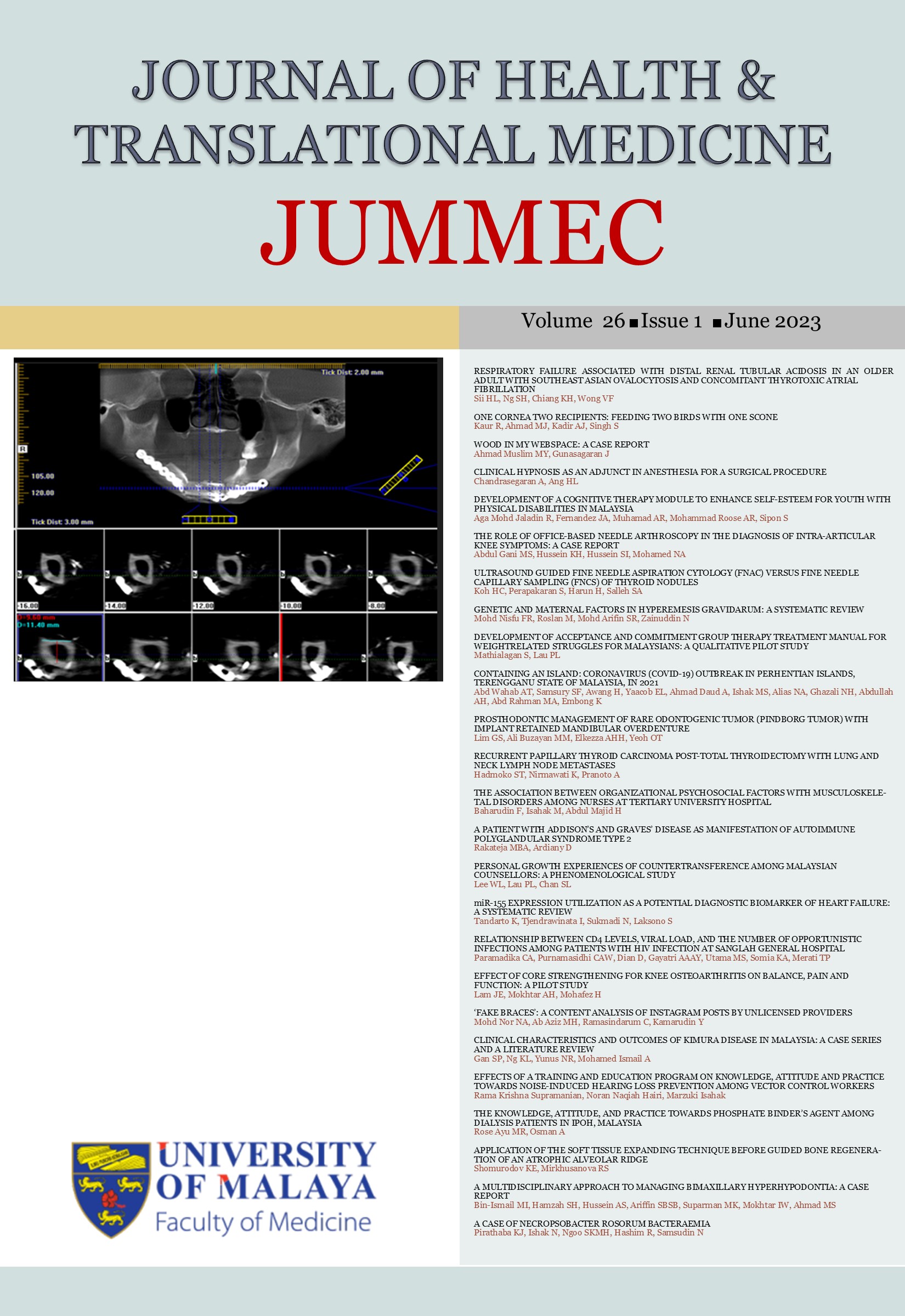miR-155 EXPRESSION UTILIZATION AS A POTENTIAL DIAGNOSTIC BIOMARKER OF HEART FAILURE: A SYSTEMATIC REVIEW
Received 2023-01-03; Accepted 2023-02-09; Published 2023-03-09
DOI:
https://doi.org/10.22452/jummec.vol26no1.16Keywords:
microRNAs, miR-155, heart failure, heart disease, diagnostic biomarkerAbstract
Background: Heart failure (HF) is a complex clinical syndrome with signs and symptoms resulting from any structural dysfunction of ventricular filling or blood ejection. miRNAs were known as essential regulators and tissue-specifically expressed. MicroRNA-155 (miR-155) expression in macrophages is already well known to promote hypertrophy, cardiac inflammation, and failure due to pressure overload. In this study, we aim to identify the role of expression miR-155 as a potential biomarker for HF.
Method: We incorporated search engines from Google Scholar, PubMed, EBSCO Host, and ProQuest to search the articles. Newcastle Ottawa Scale (NOS) was used to evaluate the bias risk in the case-control research. A systematic database search reveals 6 relevant studies.
Results: This research found that miR-155 levels were significantly higher in heart failure patients than in the MI and control groups. MiR-155's plasma levels in heart failure are higher than the control group, with a cut-off value of 0.8591, a sensitivity value of 98.5%, and a specificity value of 64.6%. However, miRNA expression patterns do not appear to differ significantly between pf and cf LVAD. Most cardiac changes and clinical outcomes specific to each device are independent of differences in miRNA expression levels. According to one study, miR-155, a diagnostic biomarker for heart failure, had a specificity of 92.14% and a cutoff value of 1.77%.
Conclusion: Our systematic review showed that miR-155 could be a potential new diagnostic biomarker in HF patients.
Keywords: microRNAs, miR-155, heart failure, heart disease, diagnostic biomarker
Downloads
Downloads
Published
Issue
Section
License
All authors agree that the article, if editorially accepted for publication, shall be licensed under the Creative Commons Attribution License 4.0 to allow others to freely access, copy and use research provided the author is correctly attributed, unless otherwise stated. All articles are available online without charge or other barriers to access. However, anyone wishing to reproduce large quantities of an article (250+) should inform the publisher. Any opinion expressed in the articles are those of the authors and do not reflect that of the University of Malaya, 50603 Kuala Lumpur, Malaysia.


